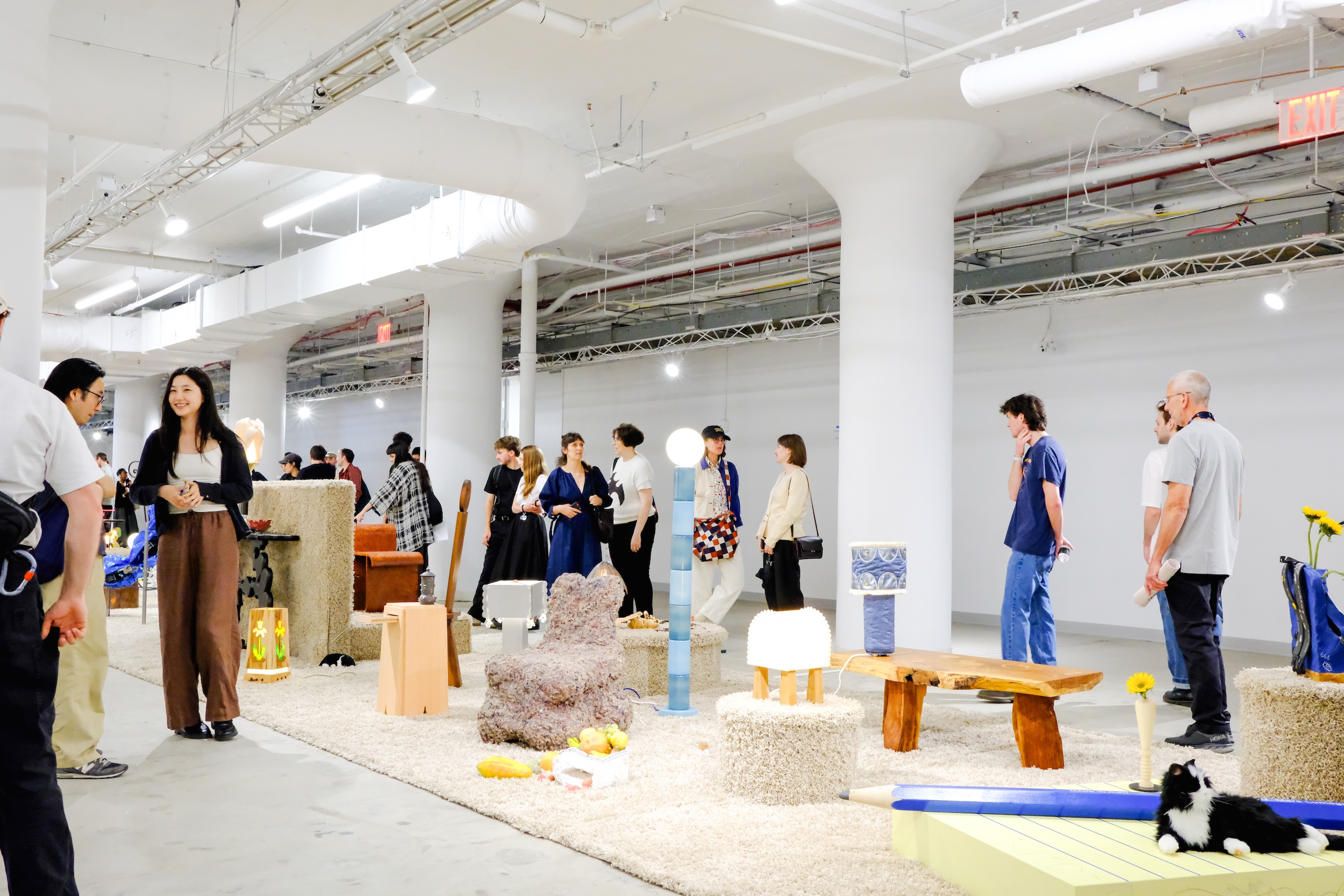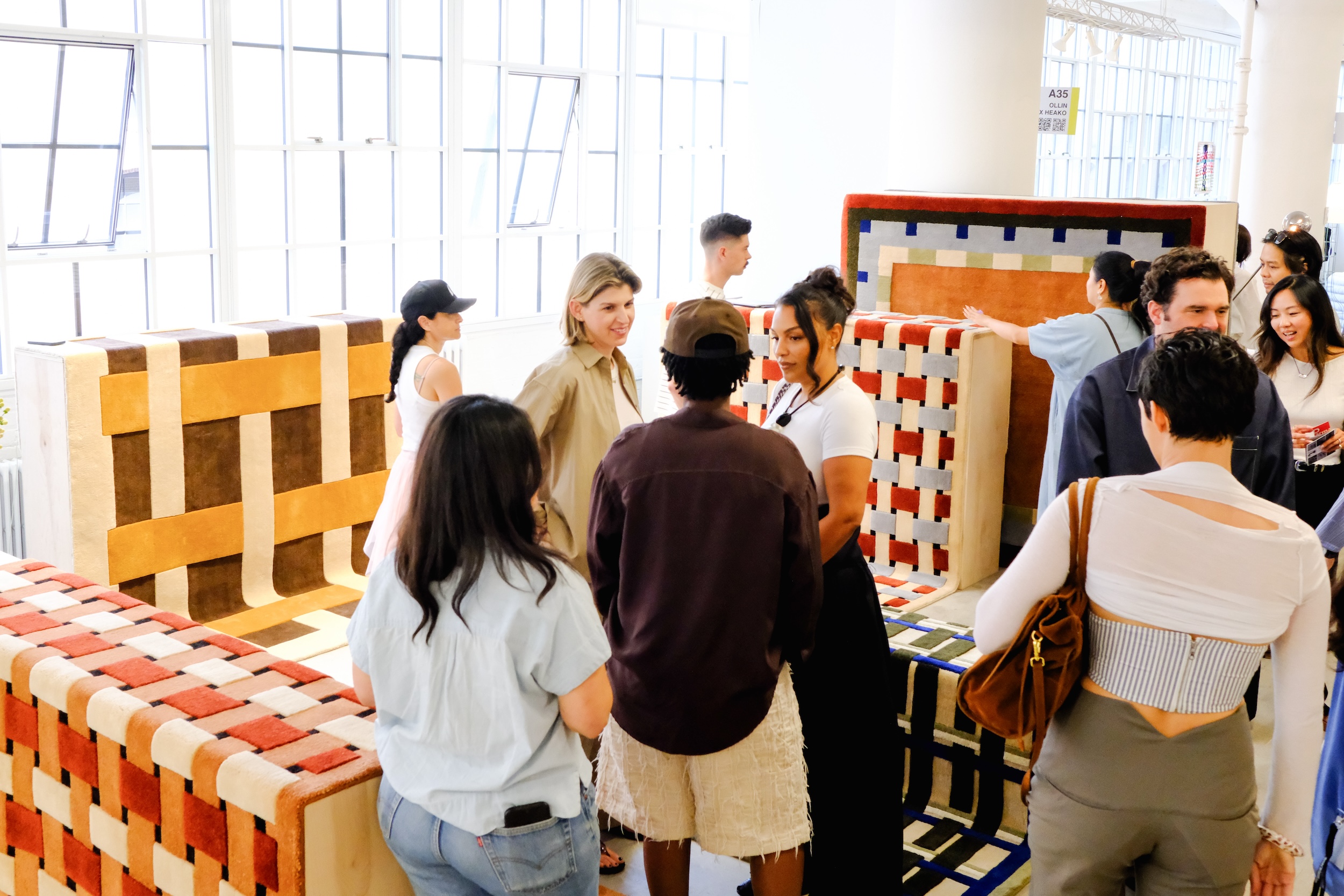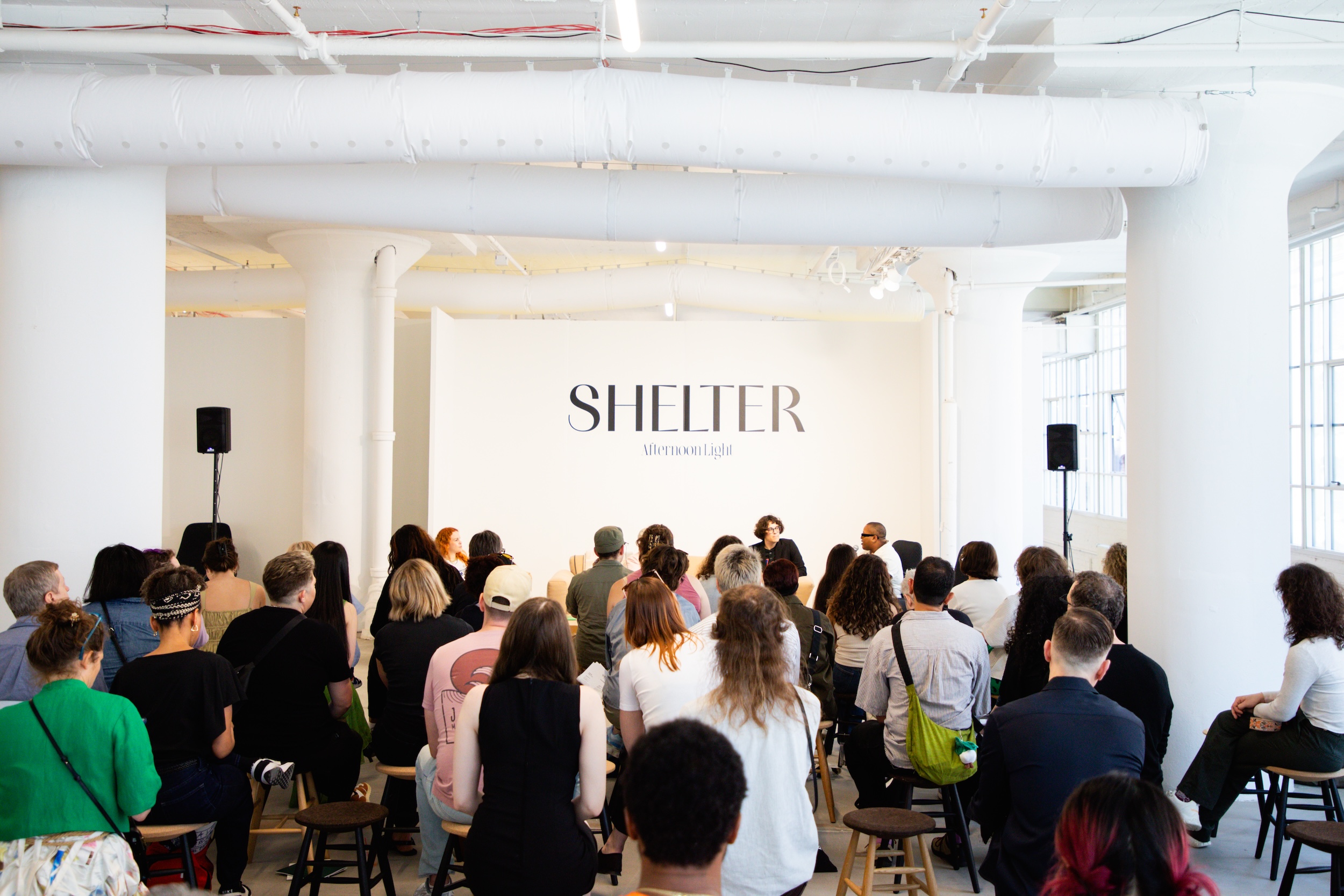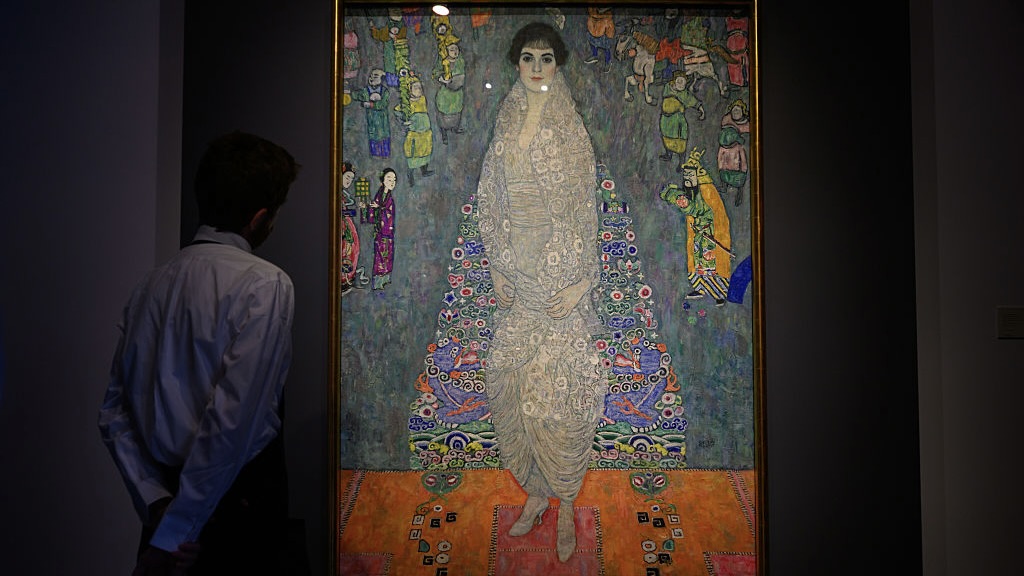Shelter, a New York Design Week newcomer, offers freedom and flexibility
'We’re building the show we wish existed,' says its co-founder.

Across the stripped industrial third floor of the Starrett-Lehigh building in Chelsea, the first edition of Shelter, a new fair created by online collectible design market Afternoon Light, has offered space for experimental design and a friendly community during New York Design Week. Contributors, representing more than 100 brands and creatives across furniture, lighting and products, found a convivial atmosphere, coupled with freedom and flexibility within the a traditional design fair format.
As fair co-founder Minya Quirk, put it: 'Not a tedious trade show, not another forgettable cocktail party, but a joyful, real-life experience where creativity, community and business collide.'

Some solo designers chose the opportunity to display without walls, taking advantage of the building's natural light and vast windows. These included quilter Luke Haynes, who hung up three of his large-scale quilts made of reclaimed textiles from thrift stores. The trained architect, who is inspired by the quilt makers of Gee’s Bend and has been quilting for 20 years, combines traditional skill with modern designs and colour; each piece is a narrative object and portrait of identity and place.

Designer Elise McMahon of Likeminded Objects, who studied design at RISD and Parsons, set up a little living room with a sofa and chair stuffed with shredded recycled textiles, which offer an alternative to petroleum-based padding that is rampant across the upholstery industry. Under the business ‘CRCL EARTH’ she distributes small batches of the padding to young designers, and hopes to reach more larger manufacturers seeking to redirect US textile waste away from countries such as Ghana, where 15 million garments a week are shipped. McMahon sees her furniture as a ‘Trojan horse’ for starting a conversation around sustainable alternatives and she’s enjoyed the opportunity to show alongside her peers and spark new collaborations.
'Big brands might find their next creative collaborator, indie studios could land a dream commission, and visitors might fall in love with a lamp and take it home,' explains Shelter co-founder Deirdre Maloney. 'We’re building the show we wish existed.'

Another local company is Queens, Astoria based Parma Tile, which showed its collection of artisanal tiles carefully sourced from places such as Italy, Japan and the Netherlands, with a focus on small makers and generations-old factories. Founded in 1975, the company’s second generation has brought renewed energy and artistic collaborations. The company used the occasion of its Shelter debut to launch fresh branding and website.
In the centre of the space, USM Modular Furniture launched a new collection, ‘Woven Structures’, by New York-based industrial designer Henry Julier Debut, former industrial design director at Standard Issue, a multidisciplinary studio in Brooklyn. The collection sees 10 of its classic modular furniture pieces of the USM Haller Modular System integrated with woven Danish paper cord. At Shelter, they were displayed with natural grasses making an interesting contrast with the raw space.
Receive our daily digest of inspiration, escapism and design stories from around the world direct to your inbox.

A strong Scandinavian cohort at Shelter included Audo Copenhagen, & Søn – as well as Swedish NO GA (Nordiska Galleriet) exhibiting designers such as the curvy Kolho chair from Made By Choice designed by American designer Matthew Day Jackson; and a new futuristic mirror by Willo Perron for NO GA Projects.
The showing marked NO GA's first showing at New York Design Week. For the brand's Carl Larsson, fairs are becoming increasingly important as the digital world grows more powerful: fairs become like ‘catwalks’ for products, presenting opportunities to connect with global sellers with likeminded instincts, he tells us.

The playful spirit of Shelter connected with New York's design scene. Jonald Dudd presented designs blending absurdity and function from its collective of Dudd Haus designers; queer-led collective Design Dysphoria led a talk and exhibition in collaboration with Gotham; and the For Scale newspaper offered insightful, fun perspectives and interviews.
Shelter has proved itself to be a venue to share ideas, reconnect and engage with intention at a more intimate scale. Or, as its organizers say, 'more than a fair — it’s a vibe.'
Harriet Thorpe is a writer, journalist and editor covering architecture, design and culture, with particular interest in sustainability, 20th-century architecture and community. After studying History of Art at the School of Oriental and African Studies (SOAS) and Journalism at City University in London, she developed her interest in architecture working at Wallpaper* magazine and today contributes to Wallpaper*, The World of Interiors and Icon magazine, amongst other titles. She is author of The Sustainable City (2022, Hoxton Mini Press), a book about sustainable architecture in London, and the Modern Cambridge Map (2023, Blue Crow Media), a map of 20th-century architecture in Cambridge, the city where she grew up.
-
 This Gustav Klimt painting just became the second most expensive artwork ever sold – it has an incredible backstory
This Gustav Klimt painting just became the second most expensive artwork ever sold – it has an incredible backstorySold by Sotheby’s for a staggering $236.4 million, ‘Portrait of Elisabeth Lederer’ survived Nazi looting and became the key to its subject’s survival
-
 New Leica Q3 Monochrom camera sees the world in black and white
New Leica Q3 Monochrom camera sees the world in black and whiteDefined by its crisp 60MP monochrome sensor, the Leica Q3 Monochrom is a camera designed for those who want to focus only on light, shadow and form
-
 How C Prinz shaped the gothic new world of Charli XCX
How C Prinz shaped the gothic new world of Charli XCXMulti-hyphenate director and movement artist C Prinz unpacks the physical, instinctive and often brutal creative process behind Charli XCX’s new 'Wuthering Heights' era